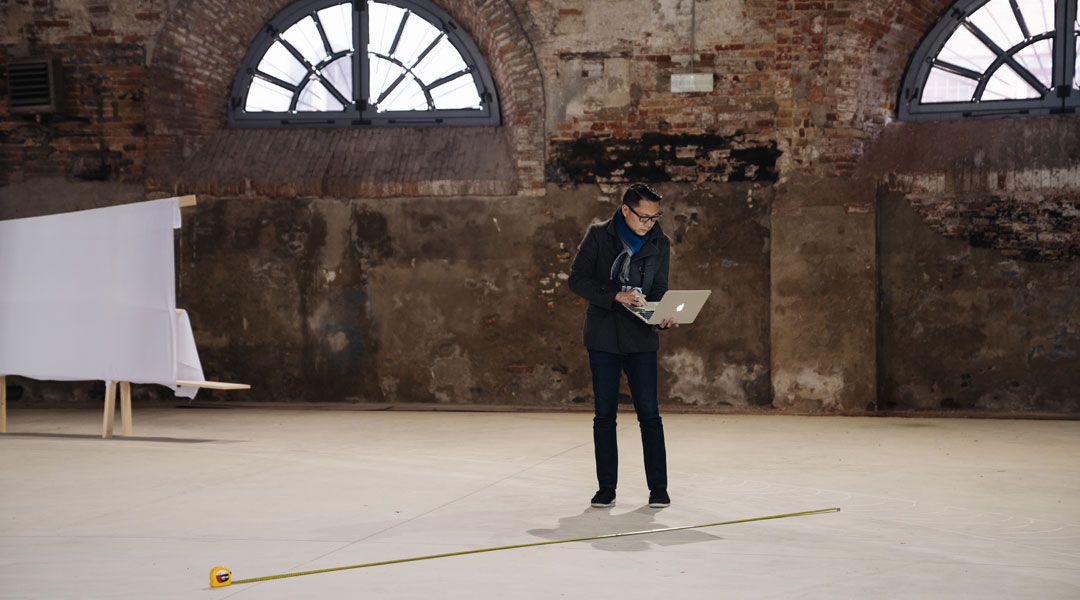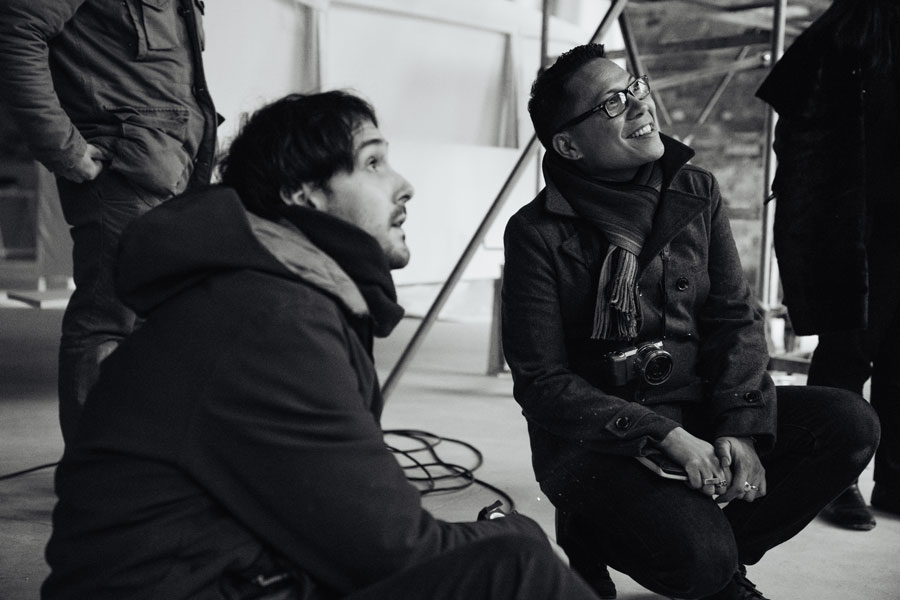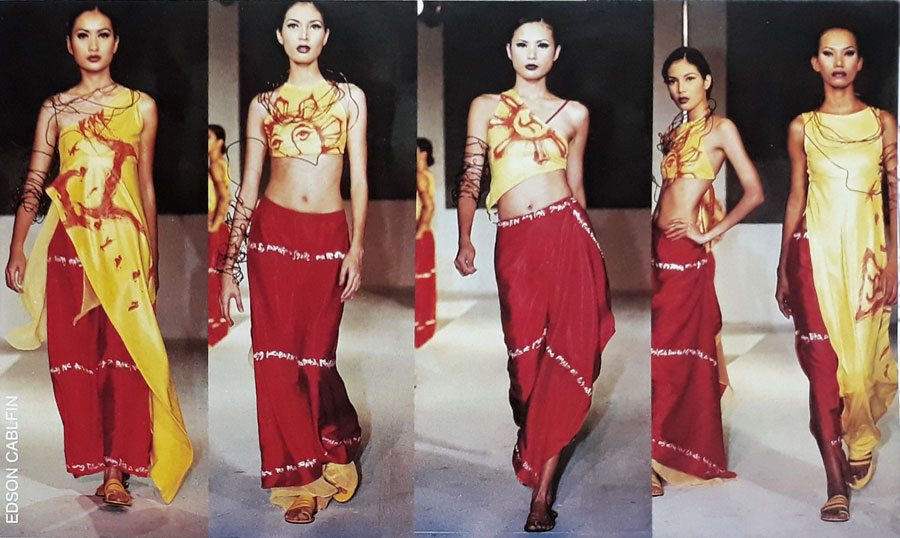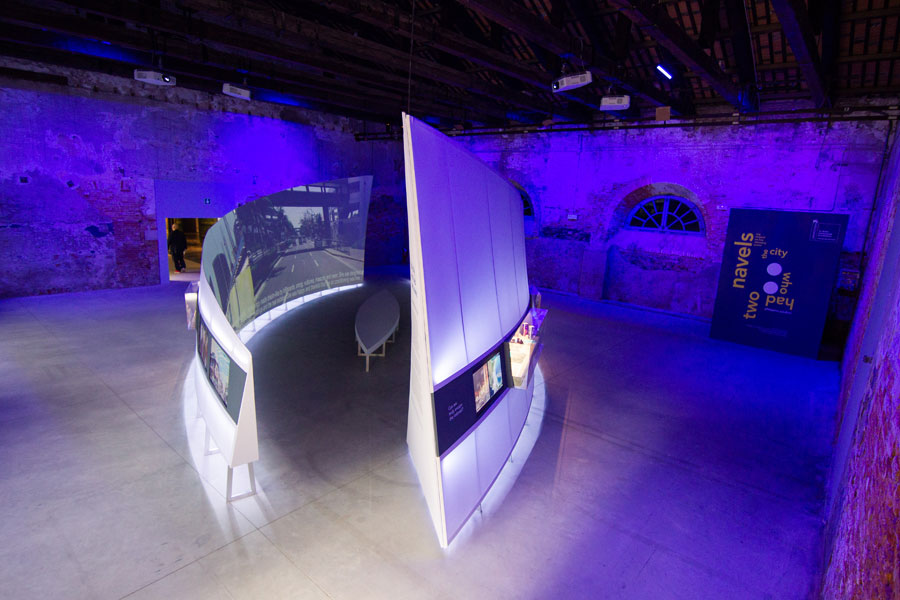
Edson Cabalfin on his shift from fashion to architecture
Edson Cabalfin, curator of the Philippine pavilion for the Venice Architecture Biennale 2018, relishes his journey as an architect and educator. His eyes glint as we talk about the ideas underpinning the way we design. His smile broadens when we ask if mentoring his student collaborators, comparable to running four thesis studios on different islands in the country, was arduous.
The pavilion officially opened to the public last Saturday. And if this were a school year cycle, the opening is graduation. Cabalfin lets out a deep sigh, not of relief but of pride and satisfaction in all the work that was put in. Everyone involved, from collaborator to invigilator, is now a flag-bearer in the world’s premier stage for architecture.
Cabalfin has had a good twenty-plus years in architecture. He is an Associate Professor in the School of Architecture and Interior Design at the University of Cincinnati. He received his Ph.D. in Architecture in 2012 from Cornell University. Under a Fulbright Fellowship from 2001 to 2003, he received his MS in Architecture from the University of Cincinnati. He taught in various capacities at Cornell, UP, UST, FEU and DLS-CSB, teaching architecture and interior design. Nestled in those credentials are a few years in a different discipline: fashion.
READ MORE: Tensions and Intersections: The Philippine pavilion opens at the Venice Biennale 2018
While completing his bachelor’s degree in architecture at the University of the Philippines, Cabalfin worked on blueprints as well as dress patterns, taking units in Clothing Technology. Fresh out of college, the young Cabalfin marched through weekdays as any rookie architect would—drawings, project meetings, site visits. However, his weekends were dedicated to wedding couture. He even became a Top 10 finalist in MEGA magazine’s Young Designers Competition 1997, selected from over a hundred entries. (MEGA is a sister brand of BluPrint under One Mega Group.)
Yes, you could say that dresses—delicate, ephemeral with the seasons—are at the opposite end of the spectrum to buildings. However, both share certain attributes. Both protect our bodies and express our spirits, albeit in different scales: with one embracing our flesh, and the other the spaces around us.
After the Philippine pavilion preview, we begin our morning with Edson Cabalfin in a small café across the Venetian Arsenal. We order our cappuccinos and chat about the enduring lessons from his stint in fashion.

BluPrint: Did you explore fashion after completing your architecture degree? Or did you shift courses while studying?
Edson Cabalfin: Fashion is my first love. In third year high-school, I was at my tita‘s house in Iloilo. They had a collection of American comic books from the 1960s (just goes to show how steeped the Philippine is in American culture). There I saw Millie the Model, written by Stan Lee under Marvel. Millie was, of course, a model (blonde) based in New York with her friends Chili the redhead and Toni the brunette. And Millie had a photographer boyfriend named Clicker.
In the comics, they had fabulous clothes. As a reader, you can submit your own designs so that Millie and her friends can wear them in a future issue. They also had paper doll cut-outs. Those piqued my interest in fashion. I started to sketch and trace. I was so fascinated with it. Then fourth year came and it was time to decide on my college degree.
My grandfather graduated from U.P and was a civil engineer. He pressured all of us to go to the same university. Nevertheless, I really wanted take up Clothing Technology in U.P., but was so embarrassed to tell my grandfather that I wanted to pursue fashion [pause] so I took architecture. While I was studying, I would audit fashion courses in the College of Home Economics: fashion illustration, history of fashion, and costume design.
In 1995, my last year of school, I entered the Smirnoff Fashion Awards. I was a finalist alongside Rajo Laurel and Patrice Ramos-Diaz, who won.
Then, the MEGA Young Designers Competition (YDC)?
Yes, I graduated in 1996. That was the same year MEGA called for YDC entries.
Who were your influences at that time?
I loved Yves Saint Laurent, Halston, Caroline Herrera, Oscar dela Renta.
And I love Audrey Hepburn. She was amazing in Roman Holiday. She is just so elegant. In my first visit to Rome in 2013, I had to retrace her steps, where she ate gelato, that bench she slept on, the Spanish Steps.
How would you describe Philippine fashion in the 90s?
Very much influenced by the grunge movement, grunge in a very Filipino way because there was a lot of hybrid mixing-and-matching, layering. You can see that in the works of Rajo Laurel and Furne One then.
I remember all the stylish girls were shopping at the Sari Sari Store, G. Gozum, and all the fishnet stockings.
One of Furne One’s entries before had this crochet fishnet and katsa (canvas) in one look. I can’t believe I still remember that!

Can you tell me more about your MEGA YDC experience? The call was in 1996, fashion show in 1997.
I have always been interested in history and indigenous culture.
…which you pursued even in architecture, and explored in the Philippine pavilion.
Right. My architecture thesis then looked at concepts from indigenous clothes and how they can be applied in architecture. So I studied textile patterns from different ethno-linguistic groups. People were already doing it at that time, but I wanted to back it up with more research.
When YDC was announced, I chose the 1896 Philippine Revolution as a starting point, anticipating centennial anniversary of our independence. I looked at the iconography used in the revolution. The revolutionaries were wearing anting-anting (amulets) to protect them from bullets. These symbols were painted on the tops of the collection.
Jose Rizal’s letter in which he praises the women of Malolos was also influential, because I wanted my pieces to be about women empowerment. So I took an excerpt from his letter and had it silkscreen-printed on the pants and skirts. So from afar, they look like stripes. But up close, these are actually subversive messages from the revolution.
I was also influenced by deconstructivist architecture. I was reading Derrida, and looking at Eisenman, Tschumi. It was the time of defamiliarization, layering, disjuncture. You can sense that in the collection through all the asymmetry.
READ MORE: PH returns to Venice Biennale with The City Who Had Two Navels


So why did you decide to take the architecture road? And when was this?
I really love design overall. I branched out quite a bit: fashion, costume, exhibition design. It comes from an interest in the creative process, just finding ways in expressing an idea but in different mediums. Architecture never went away from the picture. I eventually got my license after working for two years after college.
And YDC is also interesting in that sense because after that competition, I started doing wedding gowns. So it was architecture in the office, then Divisoria, dressmakers, and fittings on the weekends. It was at least one wedding each month and was very hectic. After a year of doing that, I realized it was just not financially feasible for me. I was comparing myself to Rajo that time who already had an atelier, a boutique, a name.
It was just a bad business model for me, I guess. I just could not compete in the industry. Then, I decided to completely stop. I was not ready.
What fashion experience resonates most with you as you teach and practice architecture now?
Multiple. How materials behave, how do you look at connections because architecture is also about that. I became more conscious about that because being a couturier was my first intense experience with materials. I was still a young architect then so I was not doing a lot of construction, but I was already hands-on with fashion. That gave me a better appreciation of detailing in architecture.
And I learned so much about dealing with emotional clients. Bride-zillas! [laughs] That gave me the confidence to negotiate with architecture clients.
Lastly, the up-close appreciation of the design process. You can only do that when you see a project through from beginning to end, and being cautious every step of the way because you are so involved in it. It’s the same feeling here with the Biennale: from the proposal, exhibition, set-up, to the catalog—I was involved in every single aspect in the process. ![]()


